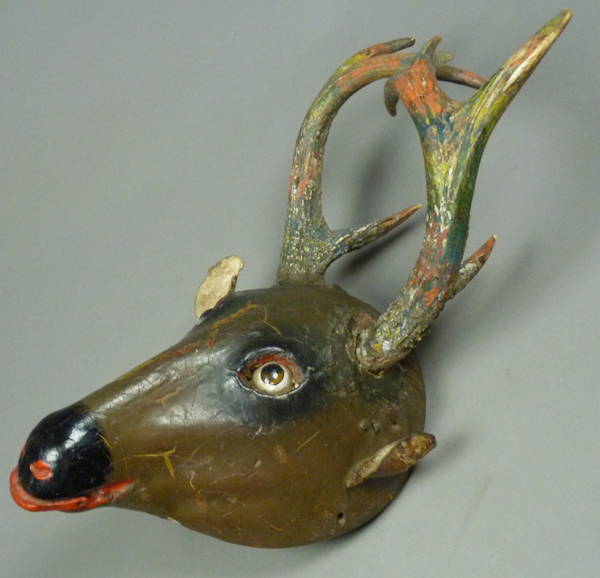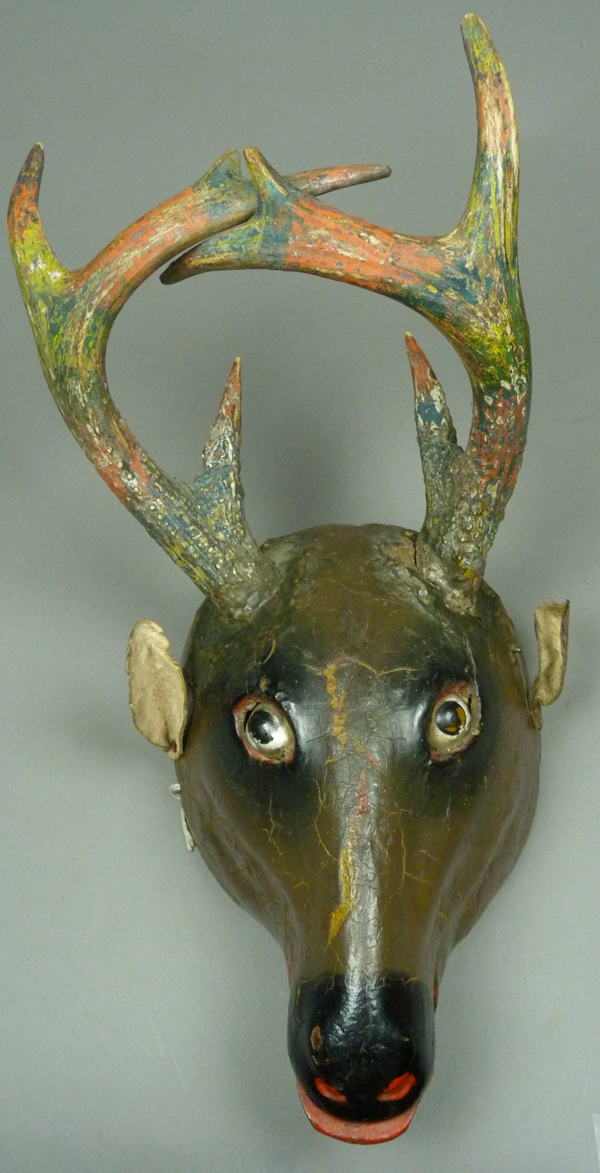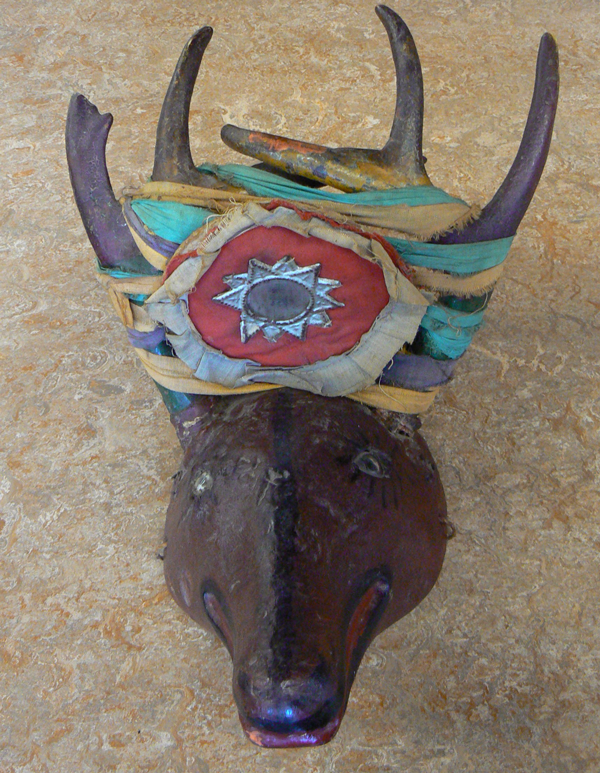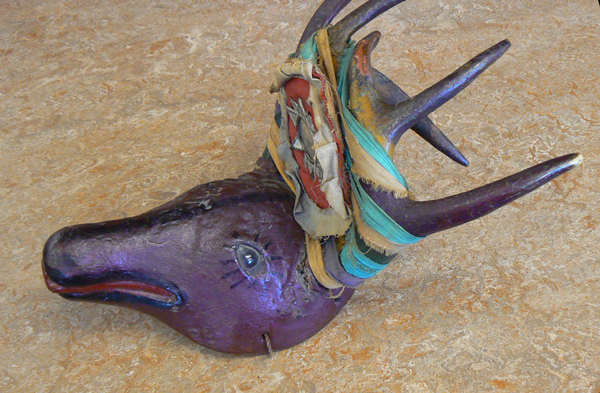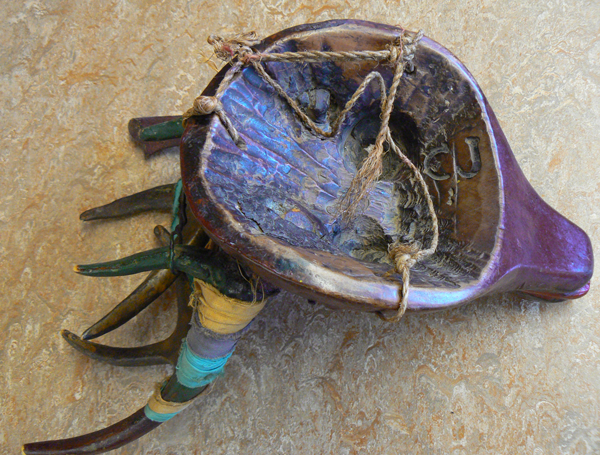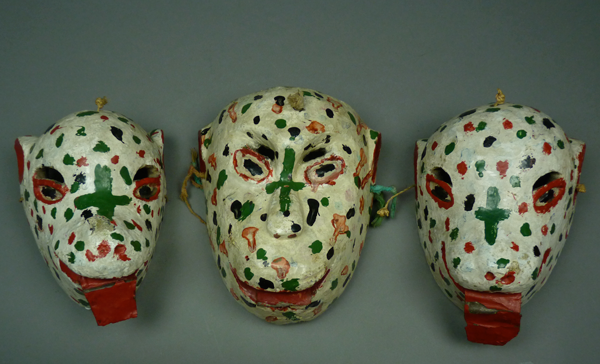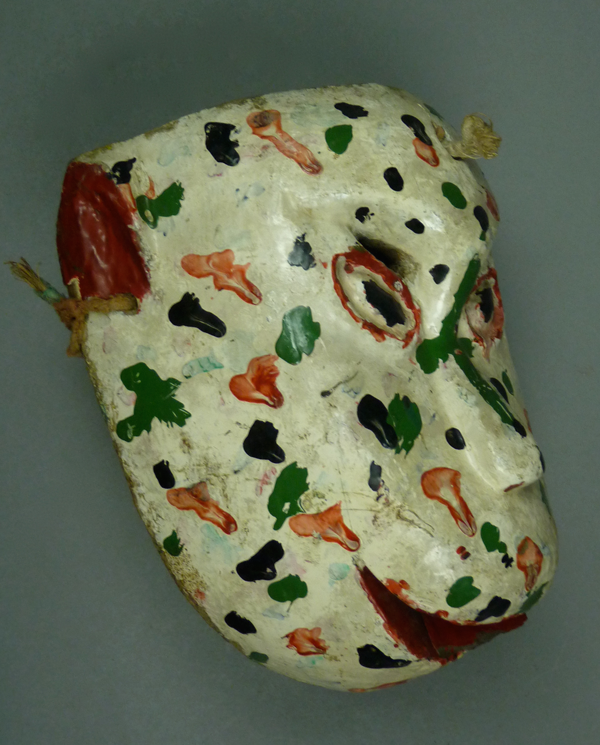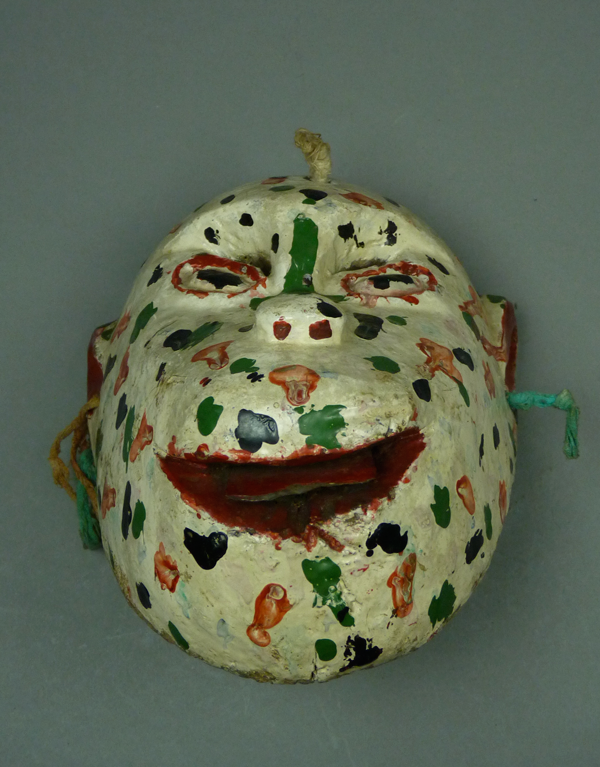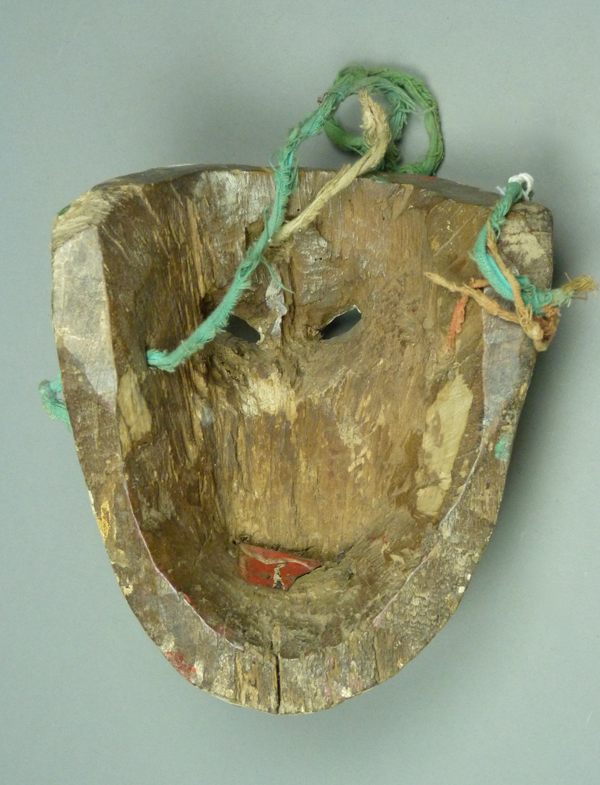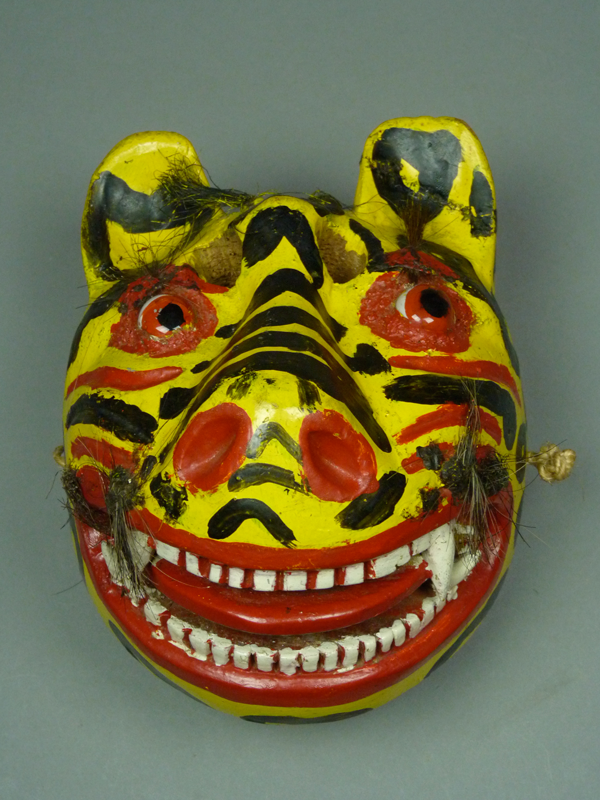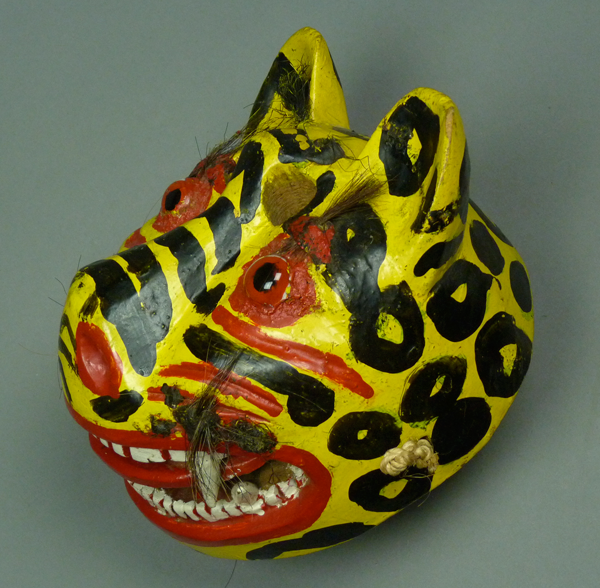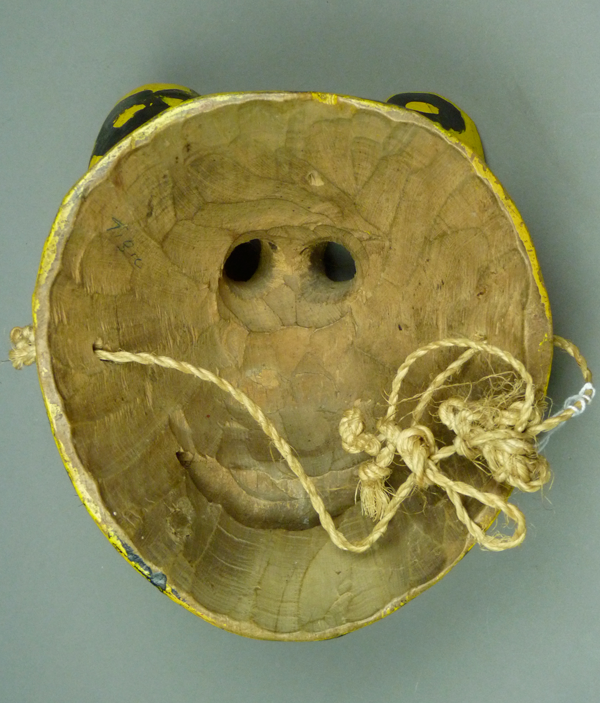Last week I introduced you to the dance masks of Guatemala, noting that Chiapas and Guatemala share Mayan roots and that Chiapas was part of the Intendancy of Guatemala during the period when the present areas of Mexico and Guatemala were under Spanish rule. Because these two areas were so closely related for so long, we find that their dances and masks have some overlapping features that are otherwise uncommon in other Mexican states. An obvious example is the popularity of monkey masks in these two regions, compared to the traditional scarcity of those masks elsewhere in Mexico. I mentioned that monkey masks are used in many different dances, including the Deer dance. Other masks from that dance will be the subject of today’s discussion and I will begin with a beautiful old Venado (deer) mask. I had been told that it was from Alta Verapaz, Guatemala. However, Jay Vannini, a collector of Guatemalan masks who lived in Guatemala for forty years, tells me that it is more typical of Quetzaltenango or Totonicapán.
I bought this lovely Venado mask and the trio of cats that follow in 1994, from the Cavin Morris Gallery. These deer masks are worn on the top of the dancer’s head. Consequently the back of the mask has heavy contact with the natural oils in the wearer’s hair, resulting in a very dark patina.
The worn paint on the antlers is quite obvious. The length of the mask is 15 inches from the tip of the tongue to the tops of the horns (10 inches for the mask alone), the width with horns is 7½ inches (6½ inches for the mask alone), and the depth of the mask is 4 inches.
This mask has embedded glass eyes.
The glass eyes are held in place with cera negra (black beeswax). This is a heavy mask, carved from dense wood. There are two metal plates, which were probably made from scrap metal, bridging a split in the wood. The dark patina is apparent.
Here is another Venado mask. This is from the collection of the late Gary Collison and is presently on display in the Lee R. Glatfelter Library on the York Campus of Pennsylvania State University.
The cloth decoration with a mirror framed with a tin star is typically found on the deer masks in some Guatemalan communities.
This is a beautiful older mask.
This mask has the CJ morería mark, from the Cruz Juárez morería in Totonicapan, Guatemala. This was a 20th century mark.
The Deer dance in Guatemala is not very different from the Tigre dances found in the Mexican states of Guerrero and Oaxaca. All of those dances feature a dancer wearing a jaguar mask who threatens harm to humans and other animals. The main difference is that the deer does not appear in those Mexican dances, although it is found in the Kalalá dance of Chiapas.
Here is an additional photo of the mask worn by the Wife of the Deer Hunter (from Gary Collison’s collection), another mask that appears in the Venado dance. The Wife helps to fend off the Jaguars in the dance and in retaliation the Jaguars attempt to carry her off. She is rescued by Viejos, dancers wearing the usual ornate costumes found in many of the Guatemalan dances, along with masks that are similar to those worn by the Spanish soldiers in the Conquista dance. The latter masks will be shown in a later post.
Here is a set of three “ocelots” from my collection that were used in the Deer dance. Note the crosses over their muzzles; you may recall that the Tigre masks in Suchiapa, Chiapas each had a cross on the back of the mask.
This is a side view of the largest of the Ocelots, the one in the middle.
This mask is 7½ inches tall, 7 inches wide, and 3¾ inches in depth. The other two masks are slightly smaller (7x6x3½ and 7x5x4 inches)
By now you may have noticed that the Jaguar masks of Guatemala are not very menacing in appearance.
This mask has a dark patina on the back.
Ending this presentation is a grinning, playful Jaguar mask that is typical of those in current use (the Ocelots apparently date from the mid-twentieth century). I found this mask on EBay™ in 2001.
The tongue and teeth are carved in place.
This mask is 8½ inches in length, 7 inches wide, and 4½ inches in depth.
The patina suggests mild use.
Next week I will introduce you to the Patzcar dance of Guatemala.

